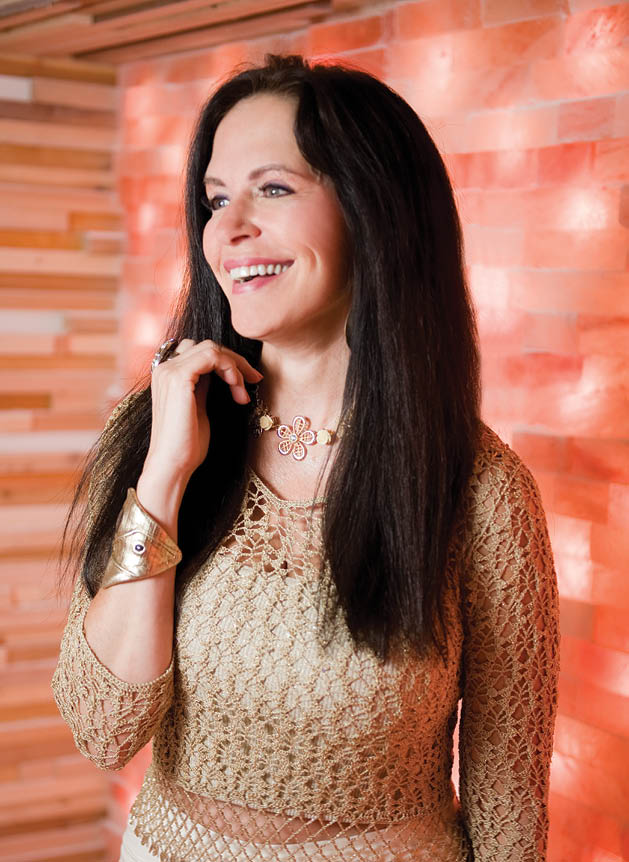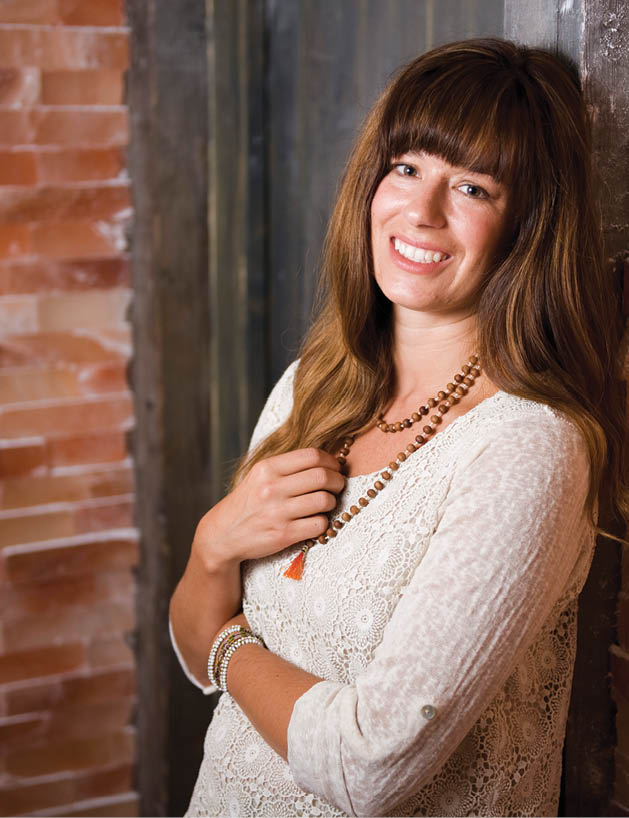October, with all its crimson and saffron beauty, can be the calm before the storm—the forces of home and work obligations and impending holiday pressure can collide to create a tornado of stress. Regardless of the time of year or the season of life, holistic wellness reaching around mind, body and spirit can be a gift to oneself anytime and anywhere.
There are attainable ways to create an intentional life, where the tempo is slowed, the energy is increased or emotions reach their equilibrium, depending on the circumstances. Three lake-area wellness experts offer their perspectives on ways to create personal balance and contentment through emotional wellness, proper nutrition and the practice of yoga.
Mind
Sue Gallucci takes a fresh approach to the age-old practice of psychology, calling it “continuing education” for those people seeking emotional wellbeing and improved relationships. Once only considered for those with profound mental illness, psychology has evolved, she notes, to aid a broad spectrum of people, including those who want to improve their lives, taking them to a new level of emotional intelligence. Many of her clients are “hitting it out of the park” in their professional lives, she says, but they are missing elements of success on the personal playing field. “They wake up and find the life they are living just doesn’t feel authentic,” she says. “They are living life according to a script.”
There is a way, Gallucci says, to begin to create a life that is genuine and original to every individual’s personal story. Her tips are about spending time reflecting and dedicating space for self care.
• It’s acceptable to operate with an “it’s all about me” mentality, she says, when it comes to getting in touch with your soul and spirit.
• Once feelings are identified, it’s vital to communicate them to others.
• Getting in touch with one’s physicality is also important. This includes focus on diet, exercise and sensuality/sexuality.
• A well-rounded sense of community is critical for wellbeing. Gallucci says it’s important to “get outside yourself” with the help of family, friends, the broader community and volunteer groups.
• Have a playful spirit. Pulling the nose away from the grindstone can be a healthy break for the psyche.
• If seeking therapy, be sure to secure a qualified professional. Life coaches, for example, may or may not have mental health credentials. Look for therapists who are licensed by the Minnesota Board of Social Work, Minnesota Board of Psychology and the Minnesota Board of Marriage and Family Therapy.

(Sue Gallucci is a licensed independent clinical social worker, psychologist, therapist and life coach. Gallucci specializes in individual and family issues, and medical concerns, including long-term chronic illnesses such as depression, addiction and stress management.)
Body
When it comes to the body, symptoms speak louder than words. Fatigue, irregular bowel patterns, bloating, heartburn, skin problems, swelling of the fingers, a puffy face in the morning, weak nails, irritability, headaches and joint pain can serve as notice of improper nutrition, according to Tricia Hadley.
Maintaining healthy eating habits can be difficult, especially for those who live life in the fast lane, driving the pace at home and work. “I think stress, racing thoughts and worrying, along with the pace of daily life, is draining and depleting to nutritional stores,” Hadley says. “It’s okay to stop and rest, even if all you can do is 10 to 20 minutes. A good multiple vitamin/mineral is a nice way to replenish depleted nutrients.”
Even if people are serving themselves healthy options, the pace at which the food is consumed plays a role. “Eating in a hurry is another form of stress on the body,” Hadley says. “I don’t like it when I hear that people are drinking a protein shake or smoothie while running out the door to work or yoga. It’s good to get a breakfast, don’t get me wrong, but it’s much easier on digestion if you sit down and eat with no distractions—like driving a car.”
Including as much organic food as possible in a regular diet is best. “The percentage each person needs depends on their ability to detoxify the chemicals that they are exposed to on a daily basis,” Hadley says. “Polluted air, off-gasses from chemically treated furniture and carpet, paint fumes and auto exhaust are things many of us are exposed to on a daily basis. Eating foods with chemicals just adds to the burden.”
Avoiding foods with added chemicals, antibiotics and synthetic growth hormones requires shoppers to look for buzz words on product labeling, including organic, spray free and chemical free (meaning the plant itself wasn’t sprayed, but the soil could have been altered with fertilizers, and the seeds could have been dipped in fungicide). “These labels are cheaper for the small farm that can’t afford to get the USDA certified organic seal,” she says. “For eggs, pasture-raised will usually be the best quality.”
Hadley offers a route to begin the journey to better nutrition.
• Cut out the junk—corn sweeteners, white flour, sugar and fast foods.
• Slow down and chew each bite of food.
• Don’t drink water or ice-cold beverages with meals.
• Eat a protein with breakfast.
• Use more fresh herbs when possible. In addition to the nutritional benefits, elements of aromatherapy are released with then herbs are cut or chopped. Basil is high in vitamin K, which can help get calcium into the bones. (Patients on blood thinners should talk to their doctor before making any dietary changes.) “Sage, oregano, rosemary and basil are my favorites,” Hadley notes.
• Refrain from eating after 7 p.m. for heartburn and digestive problems.
• Add dark greens to typical meals.

(Tricia Hadley is a doctor of chiropractic at Fusion LifeSpa in Deephaven. She’s also licensed in acupuncture and certified in Mayan abdominal therapy and applied kinesiology.)
Spirit
“For me, the balance is finding a way to integrate your life and work,” Nicole Lovald says. “Yoga can help people learn what it is they need to feel balanced, calm and nurtured.” One of the beauties of yoga is that it can be practiced virtually anywhere. Overwhelmed at work—shut the office door and pose. Overstimulated at home—shut the bedroom door and pose. Overcome by life—shut out the noise and pose.
Lovald said practicing yoga for only five to 10 minutes can result in peaceful, mindful moments when the mind-body connection can fortify and renew. “A lot of people don’t take enough time for it,” she says of undervaluing of the mind-body connection. “There’s a huge disconnect.”
Lovald recommends poses performed in a series to alleviate whatever ails a needful mind, body and spirit. (As with any exercise, consult a professional before attempting.) “You can download yoga nidra or a meditation to do while in savasana or simply relax, enjoy the present moment, and the benefits of your yoga practice,” Lovald says. “This series will help to relax the nervous system, to calm the body and mind, allowing for overall health and wellness.”
• Downward Facing Dog (Adho mukha svanasana): Begin in a table position, on all fours (hands and knees). Check that knees are directly under hips and hands are directly under shoulders. Tuck toes under while lifting up hips towards the sky. Keep knees slightly bent, and lengthen the spine from tailbone to the crown of head. Broaden through upper back by releasing shoulders away from ears. Breathe deeply, and relax into the pose, finding comfort and stability.
• Forward Fold (Uttanasana): From downward facing dog, gaze forward in between hands, and walk feet half way up as hands are walked back towards feet. Keeping knees bent, fold forward over thighs, hinging at hips. Keep the spine lengthening down towards the floor as legs slowly straighten.
• Child’s Pose (Balasana): From a table pose, draw hips back towards heels. Knees can hug in together to touch, or knees can be positioned wide with big toes touching at the back of the mat. Rest belly and chest on thighs as the forehead releases to the mat. Release arms alongside legs with palms facing up. Relax any tension in the forehead, through the jaw, and breathe fully and deeply.
• Corpse Pose (Savasana): Lie on back with legs long and arms extended with palms facing up. Keep the spine in a straight line and release head into the mat and feel the weight of the body grounding down towards the earth.

(Nicole Lovald, a certified yoga instructor and life and wellness coach with a master’s degree in counseling, is the owner of Spirit of the Lake Yoga. In addition to teaching classes at Spirit of the Lake, Lovald provides individual wellness and life coaching sessions.)
The Salt Cave Minneapolis, where we photographed this month’s story, is Minnesota’s first therapeutic salt cave. With walls and floor made of pink Himalayan salt, the cave offers visitors a place to relax or meditate with the benefit of salty air. Salt therapy has been used for centuries to help alleviate symptoms of asthma, allergies and other respiratory conditions.








